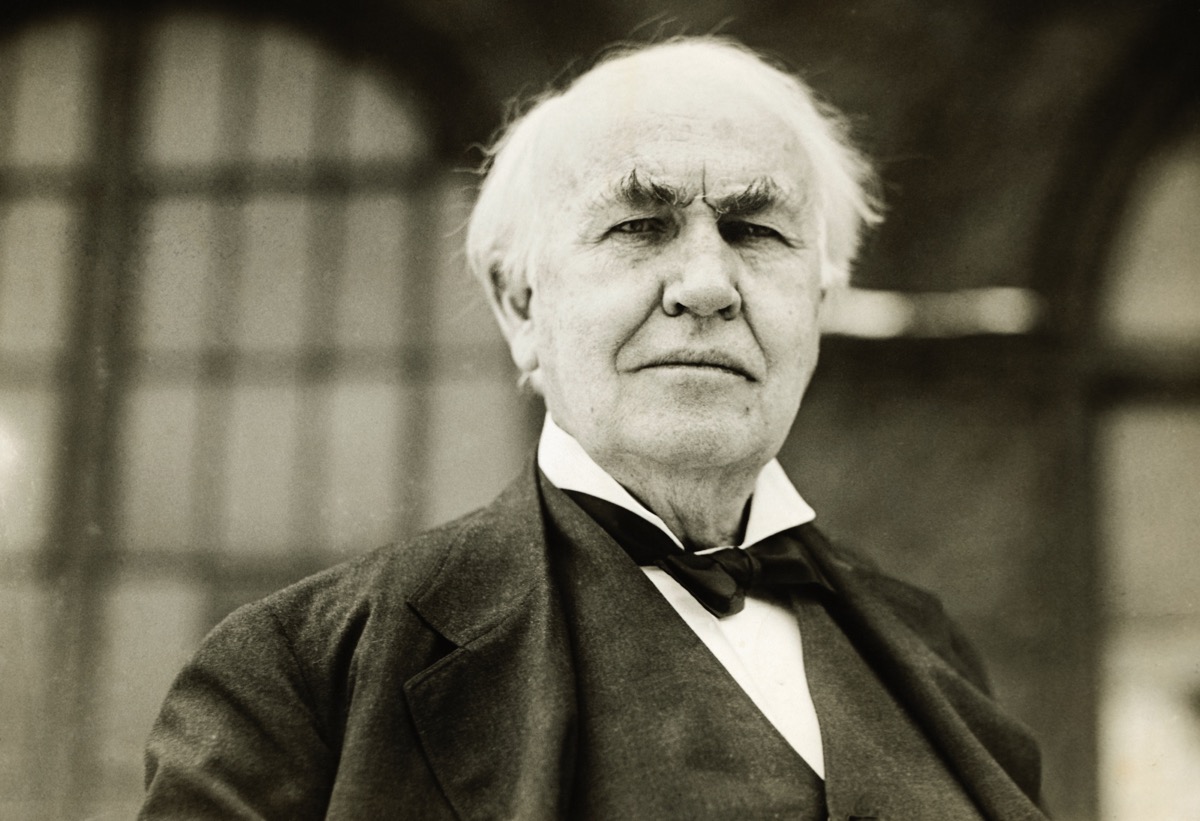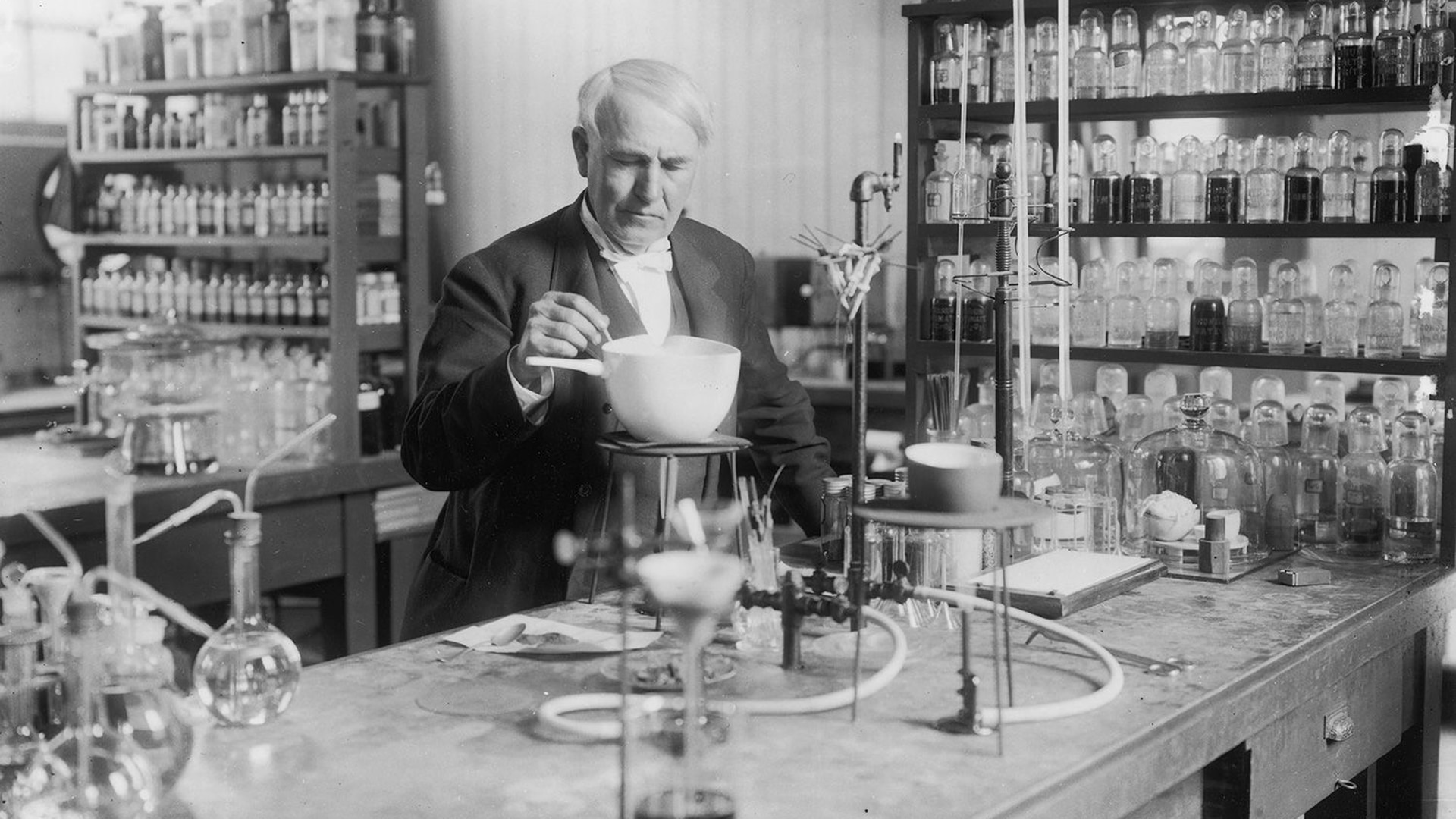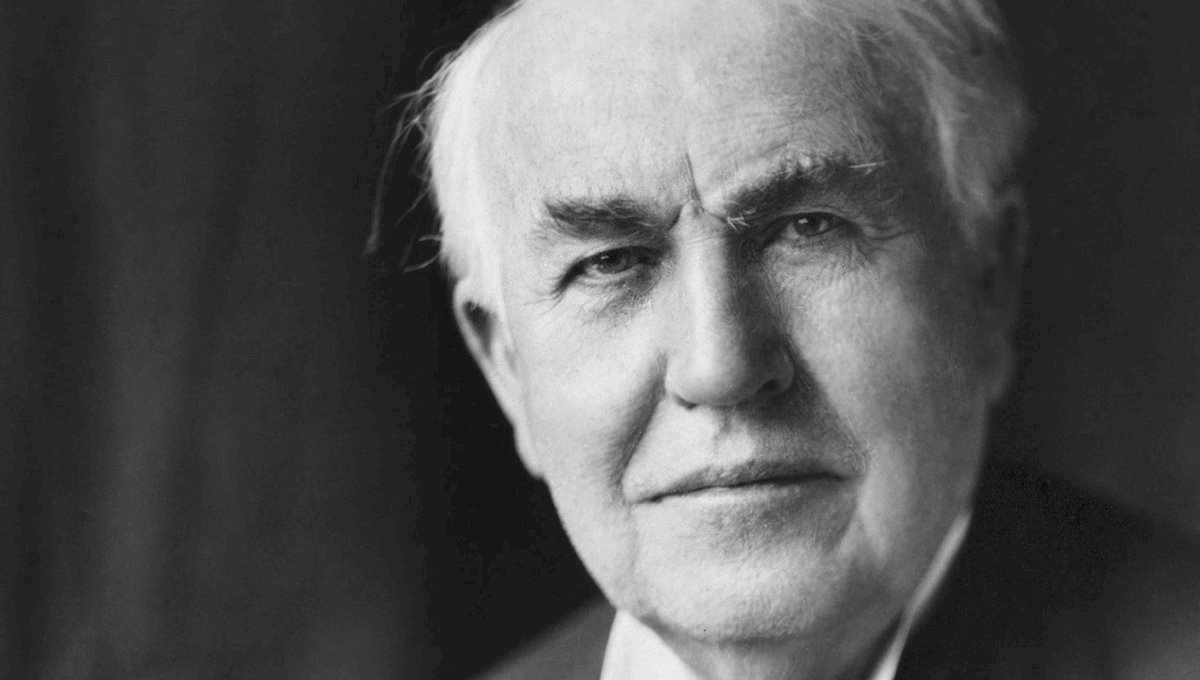
On October 18, 1931, one of humanity's most prolific inventors died, Thomas Edison, author of such great and famous phrases as "An experience is never a failure, it always comes to prove something." To remember the date of his death, I bring you 10 curiosities about his life.

- In 1877, Thomas Edison suggested using the word "hello" as a telephone greeting. It seems that the idea was taken into account.
- The movie industry settled in Hollywood because the filmmakers were trying to get away from Thomas Edison (based in New Jersey). Edison had patents on motion picture cameras.
- Henry Ford stores his friend Thomas Edison's last breath in a test tube. It is currently on display in the Ford Museum.
- He patented more than 1000 inventions (during his adult life he made an invention every 15 days).
- Thomas Edison electrocuted Topsy, a circus elephant, to prove that alternating current was dangerous. There is a recorded video of the moment.
- There is a rumor that both Nikola Tesla and Thomas Edison rejected the Nobel Prize in Physics because they refused to share it as both were continually discredited.
- Thomas Edison had the famous 5-point pattern tattooed on his forearm. In fact, the instrument tattoo artists use today is an evolution of a pen that Edison invented in 1876.
- One of the reasons Thomas Edison created the phonograph was to record the last words and wishes of dying people. Fountain
- According to his own daughter, Marion Estelle Edison, Thomas Edison proposed to his wife using the Morse code.
- Thomas Edison did not invent the first light bulb. Canadian Matthew Evans invented the first incandescent light bulb in 1874, five years before they sold the patent to Edison for $ 5000.
I was afraid of the dark
If there is a curiosity about Thomas Edison that not everyone knows but that attracts attention, it is that he was afraid of the dark. He was considered a genius, one of the greatest inventors the world has ever had. He is best known for two of his most widely used inventions. One was the precursor to vinyl records, the phonograph, which was capable of recording and reproducing sounds, and the incandescent light bulb., which was the mainstay of all houses for decades.
Perhaps the light bulb was an invention of necessity. Although the light bulb was not his idea, Thomas Edison was the first to create a reliable and working electric light bulb. Before its invention, the average person depended on flames for light, such as with gas lighting, candles, and kerosene lanterns. The light bulb wiped them out for many people.
Perhaps the driving force behind the invention was that Thomas Edison was afraid of the dark. That's right, Thomas Edison was afraid of the dark. He revealed his fear of the dark during an interview. When Edison passed away, he died with all the lights in his house on.
While many may question why a man as smart as Thomas Edison was afraid of the dark, it has little to do with intelligence. Fear is a natural instinct, and in itself it can be irrational in the most rational people.
Other inventions of Thomas Edison

In addition to the phonograph or the light bulb, Thomas Edison also had to do with the invention of other things that changed the world as it was known then. Next we are going to tell you about two things about his inventions that you may not have known about.
Industrialized Electrical Systems
It was in 1882 that the first commercial power station, located on Pearl Street in lower Manhattan, came into operation, providing light and electricity to customers in a small area. The electrical age began as the industry evolved later. Thomas Edison's Pearl Street Electric Generating Station introduced four key elements of a modern electric utility system. It featured reliable core generation, efficient distribution, successful end-use, and competitive pricing.
The electricity demand did not stop growing and went from being a night service to being a 24-hour service due to the demand for electricity in the needs of the industry. The success of electric lighting led Thomas Edison to new heights of fame and wealth as electricity spread throughout the world. Its various electric companies continued to grow until they merged to form Edison General Electric in 1889.
Despite the use of his name in the company title, Edison never controlled the company. The enormous amount of capital required to develop the incandescent lighting industry would require the involvement of large bankers. When Edison General Electric merged with leading competitor Thompson-Houston in 1892, Edison withdrew from the name and the company simply became General Electric.
Movies
Thomas Edison's interest in films began before 1888, but it was the visit of the English photographer Eadweard Muybridge to his laboratory in West Orange in February of that year that inspired him to invent a camera for films.
Muybridge had proposed that they collaborate and combine the Zoopraxiscope with the Edison phonograph. Edison was intrigued but chose not to participate in such an association because he felt that the Zoopraxiscope was not a very practical or efficient method of recording motion.
However, he liked the concept and submitted a warning to the Patent Office on October 17, 1888, that described his ideas for a device that would "do for the eye what the phonograph does for the ear": record and reproduce moving objects. The device, called 'Kinetoscope', was a combination of the Greek words 'kineto' which means 'movement' and 'scopos' which means 'to look'.
Edison's team completed development of the Kinetoscope in 1891. One of Edison's first films (and the first copyrighted film) showed his employee Fred Ott pretending to sneeze. However, the main problem at the time was that there was no good film for movies.
All that changed in 1893 when Eastman Kodak began supplying motion picture material, making it possible for Edison to step up production of new films. He built a movie production studio in New Jersey that had a roof that could be opened to let in daylight. The whole building was built so that it could move to keep in line with the sun.

C. Francis Jenkins and Thomas Armat invented a movie projector called the Vitascope and asked Edison to supply the movies and manufacture the projector under their name. Eventually, the Edison Company developed its own projector, known as the Projectoscope, and discontinued the Vitascope. The first films to be shown in a "theater" in the United States were released to the public on April 23, 1896, in New York City.
These are just a few curiosities about Thomas Edison that you may not know, because like any famous person of his time, it was easy to miss some details because of the decades that have passed since then. Although thanks to the information that is collected we have been able to collect these curiosities so that, you know, a little more about this genius who, despite being afraid of the dark, he was able to create inventions that changed the course of society.
Edison the patent thief! It is not uncommon for Edison to have been friends with Ford, an anti-Semite, and Edison himself a thief of patents, many of them to Tesla, whom he wanted to eliminate from his path at any cost due to his personal interests. Its direct current was useless and never served the purpose of illuminating the planet. Nor did he even know that he did not invent the incandescent light bulb. Edison worked for money and for his own ego, Nikola Tesla to give free energy to the world and for the good of humanity. I always admired Einstein, but by now I recognize that Tesla was much better with his more than 800 patents, who also suffered the theft of many.
Molt bo !!
does not say anything about the self-esteem of Thomas Alva Edison if he could see another part of how his self-esteem was and I would appreciate it for the investigation task delivered on Monday, August 21